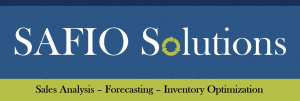As many businesses are experiencing some downtime, it is the perfect opportunity to work on the things that have been neglected: Things that there is never enough time for. By taking this gift of time, businesses can emerge from this period of uncertainty even stronger than before.
Having a sound forecasting process provides benefits across an organization. In addition to the primary objective of fulfilling customer needs on-time in a cost-effective manner, there are numerous other benefits:
Provides a Roadmap for Financial Planning
Forecasts define the expected sales goals, inventory levels and profitability of a business. When trends deviate from the roadmap, actions can be taken to get back on track to achieving company goals. Strategic decisions can be made based on what is working and not working. Forecasts help businesses anticipate change, reduce uncertainty and identify the best ways to achieve their goals.
Encourages Collaboration between All Departments
The forecasting process requires all departments to work together. Production must provide information on capacity. Distribution provides workforce training and scheduling. Promotions and marketplace guidance are functions of the Marketing and Sales departments. Forecasting encourages all departments to get on the same page, understand their role and execute toward common goals. Since forecasts are data-driven, there are fewer decisions made on gut feelings.
Highlights Growth Opportunities and their Potential
When an item or category is trending up from the original projection, a forecast allows a business to recognize this very quickly. Demand can be re-projected, ensuring that adjustments, such as inventory or pricing, can be made to maximize profitability.
Lowers Liabilities and Markdowns
With a forecasting process, items that are not selling up to their original forecasts can be addressed early and adjustments can be made based on the sales trend. Production can be canceled or redirected, pricing can be adjusted to increase demand, or marketing promotions can be increased. Taking action early ensures that the most profit possible can be generated.
Increases Turn and Cash Flow
Inventory needs are mapped out with a forecasting process. Businesses are able to save money because they can project the inventory they will need and when they will need it, thus not having to hold excess inventory. This will give businesses better cash flow, often enabling them to be able to afford buying more of the items that are selling above projections.
Guides Scheduling for the Rest of the Company
Forecasts enable businesses to anticipate staffing and production needs. Production schedules can be adjusted based on shifting priorities and sales trends. Temporary staffing can be hired, if needed.
Provides Insights for New Product Development and Planning
Forecasts enable businesses to see changes in consumer demands and help answer why the marketplace is changing. With well-defined data, a business can determine the whitespace in a market and begin development of products to fill that space. Using historical data, a business can forecast potential for new products and increase their success rates.
Increases Knowledge of Market
Because a well-defined hierarchy brings clarity and well-planned forecasts provide a roadmap, companies can see changes to the marketplace quickly. Valuable insights can be gained, giving companies an edge over the competition.




